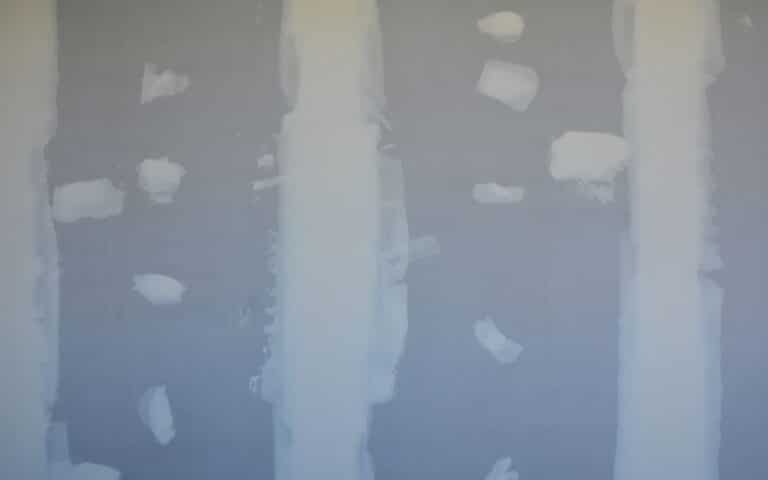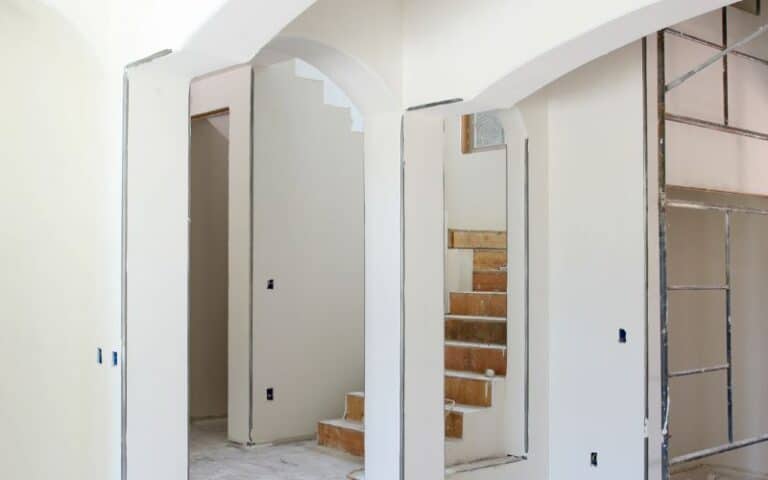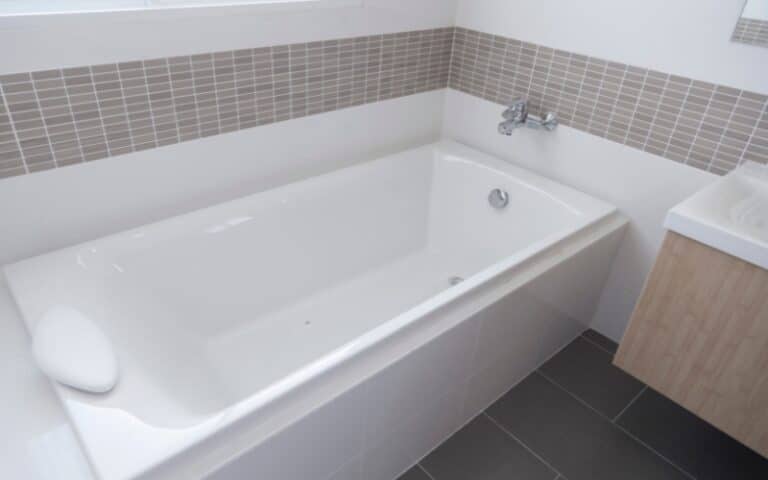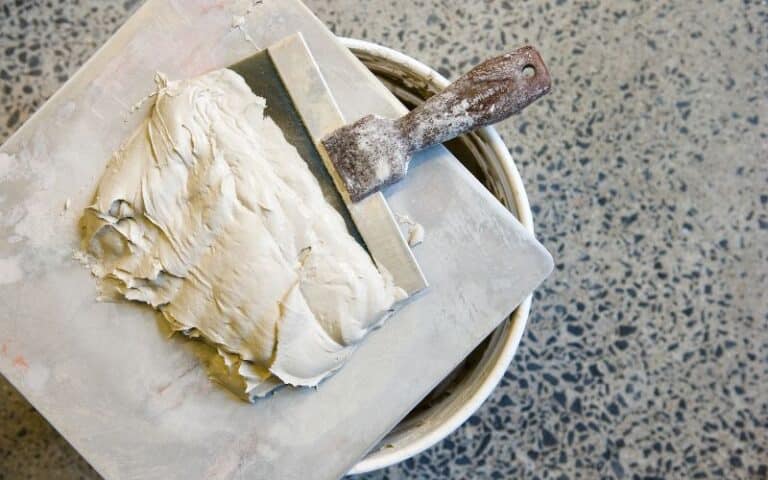Mold growth on drywall is a common problem for many homeowners. It is not only unsightly, but it can also cause damage to your home and health problems for you and your family.
Mold spores naturally occur in the air, so it doesn’t take much for mold to start growing on walls, ceilings, and other surfaces.
However, to prevent these issues in your home, if you use drywall, you should know how fast mold takes to grow on it.
Mold grows on drywall within a day to two if the conditions are ideal. However, the mold might not become visible immediately after it starts growing. Depending on the spore type, the mold spores start colonization within 1-12 days and become visible in 15-21 days. Therefore, it’s better to remove it before it becomes harmful.
In this article, I’ll explain how fast molds can grow on your drywall when it becomes visible and how to recognize them. I’ll further explain what you should do when it appears on your drywall.
By the end, you’ll recognize when molds appear on your drywall, how fast it grows, and how to remove them.
Ready for a Drywall Quiz?
How Fast Does Mold Grow on Drywall?
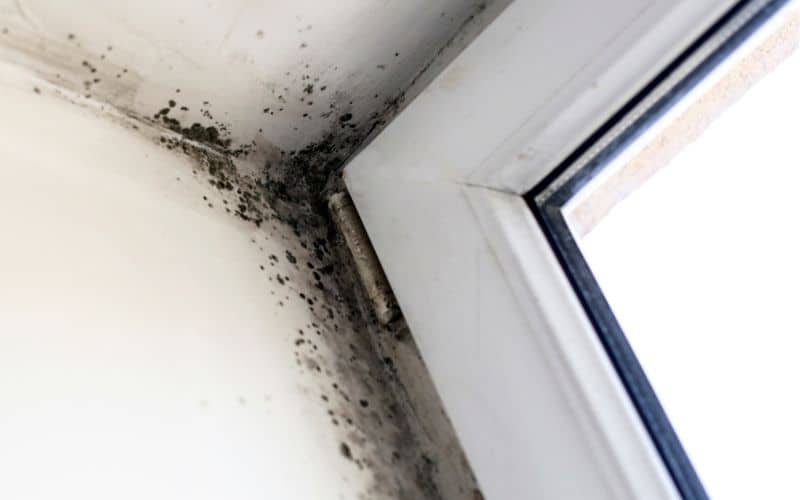
Mold growth on drywall can be a significant problem in any home. However, if the right conditions are present, mold starts growing within 24 hours to 48 hours and spreads rapidly.
The drywall exposure to water or high humidity level without you doing anything about it causes the mold spores to start breeding and growing.
How they grow depends on the type of mold. In ideal conditions, mold can double in size every 24 to 48 hours.
Although, the mold might not be visible at first and takes a few days to start showing.
When mold starts growing on drywall, it can be challenging to detect because the spores may not be visible to the naked eye.
The best way to prevent mold from growing on drywall is to control the humidity levels in your home and maintain proper ventilation.
In addition, you should inspect your walls for signs of water damage, as this indicates potential mold growth.
If you find mold growing on your drywall, it’s necessary to address the issue quickly by removing the affected area and replacing it with new drywall.
You can remove the mold yourself or hire a professional to help with the removal process. Although, you should hire a professional for your drywall mold removal.
If the mold has already damaged large sections of drywall, it may need to be removed and replaced entirely.
It’s also necessary to identify the source of moisture that caused mold growth and take steps to correct it.
Finally, use specialized cleaners for mold removal to ensure you remove all traces of the fungus.
When dealing with mold on drywall, prevention is critical – regular maintenance and inspection will help reduce the risk of future issues.
How Do You Know If There Is Mold on Drywall?
Mold can be difficult to spot on drywall, but it’s necessary to identify it before it can spread.
Here are some common signs that mold is present in your drywall.
- Discoloration
- Water damage
- Musty smell
- Cracking of the paint
- Visible mold growth
- Use of moisture tester
- Use of screwdriver
#1. Discoloration
You can tell your drywall is moldy if it becomes discolored. The most obvious sign of mold on drywall is discoloration in the form of dark spots.
These spots can also be yellow, green, or brown stains on your drywall and are usually circular or irregularly shaped.
If your drywall is moldy, those discolored spots are wet, and if they’re not yet moldy, the drywall will soon be.
#2. Water Damage
To recognize moldy drywall, look for water damage signs, as those wet places are likely areas for mold to grow.
#3. Musty Smell
Your drywall is musty if you perceive a musty, stale smell from the room. The odor is from the mold spores released from the drywall in the air.
#4. Cracking of the Paint
Another sign of moldy drywall is the cracking and peeling of paint. In addition, your walls may deform, bow, or bulge when a water problem occurs, frequently resulting in mold.
#5. Visible Mold Growth
When you see small patches appear on the drywall, then it’s moldy. The patches can be in black, green, or white and can be slimy or powdery in texture.
#6. Use of Moisture Tester
You can also use a moisture meter to test for higher humidity levels in areas of the wall that could indicate mold growth.
You can also determine the type of mold in your home. Although knowing the mold type doesn’t mean you still won’t remove the mold.
#7. Use of Screwdriver
You can use a screwdriver to test for mold by examining the suspected area for mold. For example, mold is in the wall if the wood dissolves or the wall is soft.
How Long Does It Take for Drywall Mold to Become Visible?
Mold on drywall can take 18-21 days before it becomes visible. The mold can grow anywhere from 24 to 48 hours, but it might not become visible due to its microscopic nature.
Mold needs moisture, warmth, and organic food source to grow. If these conditions are present, it can begin to form colonies and become visible within a day or two.
In some cases, however, the mold may not become visible till several days or weeks have passed. When mold begins to grow on drywall, it is usually a sign of excess moisture in the area.
This mold could be because of leaks in plumbing pipes or roofs, high humidity levels, condensation on windows, or water damage from flooding.
In any case, it is necessary to address the issue soonest and take steps to reduce the moisture levels to prevent further mold growth.
In most cases, visible signs of mold will appear in black or green spots on the drywall.
However, if you notice any discoloration or staining on your drywall, test it for mold. You can do the test with a home testing kit or call a professional for an inspection.
It is important to remember that when dealing with drywall mold, you need to take quick action.
As soon as you detect any signs of mold, you should remove it before it spreads and causes further damage to your property.
What to Do If You Find Mold on Drywall?
If you suspect mold growing on your drywall, the first step is to confirm the presence of mold. Test a small area of the wall with a mold test kit.
If mold is present, it is necessary to act quickly and take steps to rectify the issue.
Here are steps to take when you find mold on your drywall and remove it.
#1. Find the Source
First, identify the moisture source in the drywall and address it.
Check for plumbing leaks, or use a dehumidifier to reduce the humidity in the room. In addition, any water-damaged drywall must be removed and replaced.
Once the source of moisture has been identified and addressed, it is time to clean the affected area or remove it entirely.
#2. Clean the Area
Before cleaning the affected area, dress properly by wearing long sleeves, a respirator mask, gloves, and safety glasses.
You can clean the affected areas with cleaning agents like detergent. You can use vinegar or diluted baking soda, or even diluted bleach.
Pour the solution into a spray button, apply it to the affected areas till it covers it, and leave it to sit for about 10 minutes. Scrub it with a toothbrush till the mold is gone.
Then, use a damp cloth to remove any remaining particles and spores. It is necessary to properly dispose of any materials used during the cleaning process, as they may contain mold spores.
#3. Dry the Wall
After cleaning the area, ensure you completely dry the affected area. A fan can help speed up this process. Finally, seal the area with a fungicide to prevent any future growth.
While you can remove mold from drywall by yourself, it is best to seek professional help if you suspect a large-scale infestation.
Professional cleaners are trained in mold remediation and have access to specialized equipment and products that can effectively clean and seal drywall.
Here are the pros and cons of using a professional cleaner so you can make your choice.
| Pros | Cons |
|---|---|
| Professionals are experienced and accurately diagnose the mold location. | You might have to wait before a professional is available. |
| They have the required tools to remove the mold. | Their services are expensive. |
| They will kill the mold so that it doesn’t reappear. | You may need to leave your house for them to work. |
| They are more thorough than DIY. |

